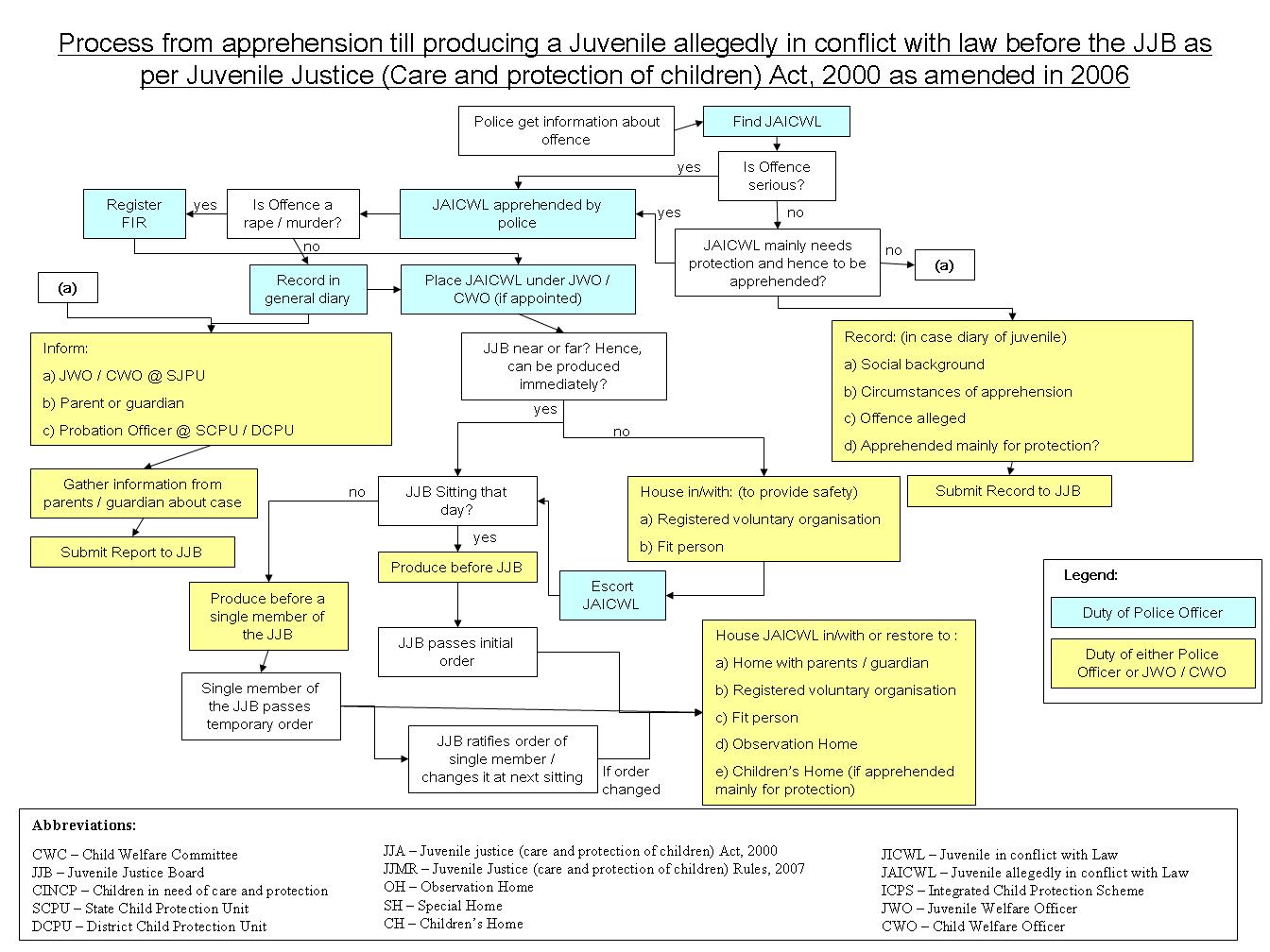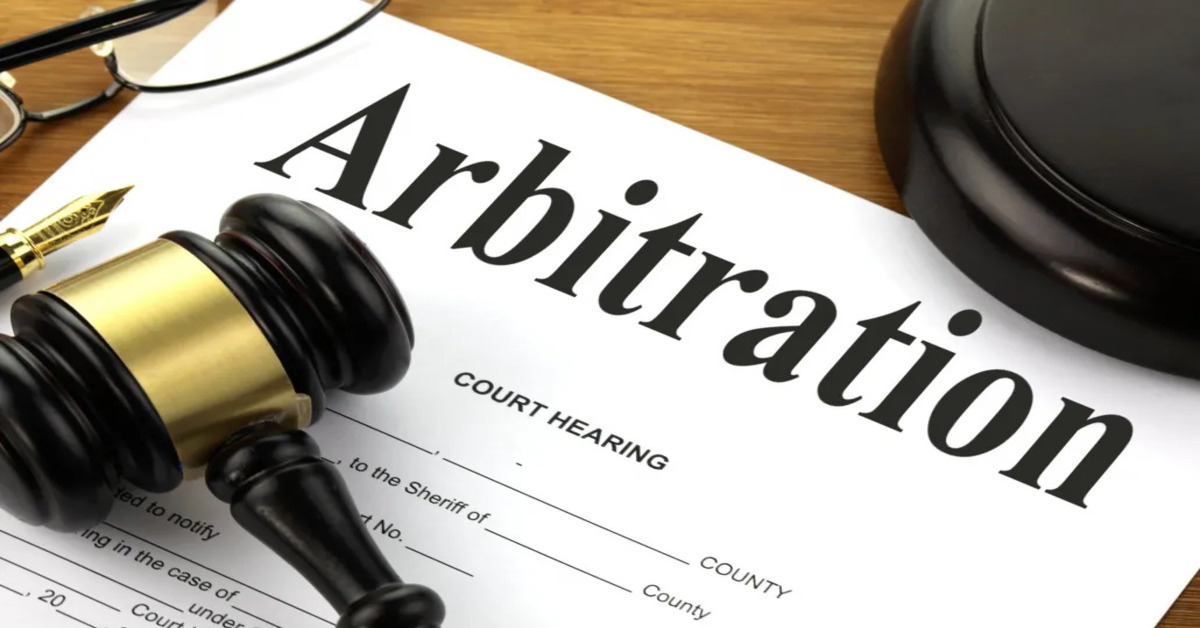Juvenile Justice (Care and protection of children) Act, 2000 as amended in 2006
Some Introductory remarks:
This document is prepared in order to help one quickly get a feel of the Act and locate important provisions relevant to dealing with cases relating to children. It also provides Flow Charts as and when necessary that can help one easily and quickly find out what actions need to be taken at any particular time while dealing with a case. This is intended to be an informal document and is not to be treated as legally accurate.
- A ‘child’ in this Act is defined as a person who has not completed the eighteenth year of age (as per Sec. 2(k) ).
- This Act is today the single exclusive legislation in India (excluding Jammu & Kahsmir) that is relevant in dealing with children either when they are found to be in need of care and protection from the state or when they are allegedly found to be in conflict with law (as per Sec. 1(4) ). This over-rides all other legislations including the Indian Penal Code, 1860, the Code of Criminal Procedure, 1973 etc in matters relating to children as said above.
- The Act was initially passed in the year 2000 and later amended quite substantially in 2006. Some minor amendments are being proposed further as of today (2010) but yet to take any concrete shape.
- As said above, this Act classifies children for the purpose of dealing with them into two categories namely
- Children in conflict with law (including those just allegedly so)
- Children in need of Care and Protection
- The children in conflict with law are to be dealt by the Juvenile Justice Boards (JJBs) usually shortly called as the ‘board’ and the children in need of care and protection are to be dealt by Child Welfare Committees (CWCs), usually shortly called as ‘committee’.
- The classification does not go to say that the first category does not need care and protection but just that the first category needs a special approach different from the other in addition to care and protection.
- This Act also clearly recognizes that civil society needs to be involved significantly if true justice is to be provided to all children and hence provides ample scope for involvement of citizens either through voluntary organizations or even if one is just a ‘public spirited citizen’ (Refer Appendix-A: Roles for civil Society).
- One other very relevant document to be read along with this is the “Integrated Child Protection Scheme” (draft) document released by the Ministry of Women and Child Development, Govt. of India.
- The Juvenile Justice (care and protection of children) Rules, 2007 forms a model of the rules based on which each state is to prepare it’s own rules that are necessary to further detail the way the Act would be implemented.
Introduction to the Act:
This is an act which aims to:
- a) Consolidate and amend the law relating to juveniles in conflict with law and children in need of care and protection (Replace Juvenile justice Act, 1986)
- b) Provide for proper care, protection, treatment and cater to their development needs
- c) Provide a child-friendly approach keeping their best interest in mind while dealing with them
This act sources it’s principles / has it’s foundations in:
- a) The Constitution of India: Article 15(e), 39 (e) & (f), 45 * 47
- b) United Nations Convention on Rights of the Child (UNCRC), 1989 (Ratified by India in 1992 (with a reservation on child labour eradication alone))
- c) United Nations Standard Minimum Rules for the Administration of Juvenile Justice, 1985 (Beijing Rules)
- d) United Nations Rules for the Protection of Juveniles Deprived of their Liberty, 1990
Some Abbreviations:
CWC – Child Welfare Committee
JJB – Juvenile Justice Board
CINCP – Children in need of care and protection
JICWL – Juvenile in conflict with Law
JAICWL – Juvenile allegedly in conflict with Law
ICPS – Integrated Child Protection Scheme
JJA – Juvenile justice (care and protection of children) Act, 2000
JJMR – Juvenile Justice (care and protection of children) Rules, 2007
OH – Observation Home
SH – Special Home
CH – Children’s Home
Major Provisions:
This section will list in simple bullet points the meaning of the main provisions. In case, you need to see the detailed provisions, please do read the Act itself along with this. Sections of JJA are mentioned as Sec. and rules from the JJMR are mentioned as Rule.
About Juvenile in conflict with law:
- Sec 2(l): A Juvenile in conflict with law is defined as one who is below 18 years of age as on the date of commission of the offence.
About JJB and it’s functioning:
- Sec 4(1): A Juvenile Justice Board (or more than one) has to be established in every district in the country in 1 year (i.e. by 2007)
- Sec 4(2): At least, 1 woman should be there among the 3 members of the board
- Sec 4(3): The Judicial Magistrate (JM) or the Metropolitan Magistrate (MM) should have special knowledge or have received training on child psychology / child welfare & the two social workers on the board should have at least 7 years of active experience working towards issues of children.
- Sec 4(5)(iii): Members shall be disqualified if they do not attend continuously for 3 months or if overall attendance in a year is less than 75%.
- Sec 5(1) & Rule 9(3): JJB should meet on every working day of a week unless cases are less and such a specific order exists to that effect.
- Rule 9(5): Every JJB session should be at least for 5 hours
- Sec 5(2): In case the board is not sitting, a JAICWL can be produced in front of any single member of the board.
- Sec 5(3): Final disposal of a case in the JJB requires at least the JM / MM and one social worker to be present
- Sec 6(1): JJB is the single exclusive authority for cases of JICWL
- Sec 6(2): A Session’s court or a High court can take appeals or revisions against a JJB order and exercise the powers conferred on the JJB by this Act.
- Sec 7: In case, any case relating to a JAICWL comes up in a court, the court shall redirect the same to the JJB.
About Institutions for JICWL:
- Sec 8(1): Observation homes are to be established in each district or group of districts for temporary reception of JAICWL during pendency of inquiry.
- Sec 8(4): Initially, the JAICWL has to be placed in the reception unit of the OH for:
- Preliminary inquiry
- Care
- Classification based on age (7-12, 12-16 &16-18), considering physical / mental health and degree of offence
- Sec 9(1): Special homes are to be established in each district or group of districts for reception and rehabilitation of JICWL which implies that orders have already been passed by a JJB in such cases.
- Sec 9(4): The juveniles shall be classified based on age, considering physical / mental health and nature of offence.
About process relating to JAICWL:
- Sec 10(1): No juvenile for any reason can be lodged in a police lock-up or in jail.
- The detailed process of dealing with JAICWL is as illustrated in the flow chart attached below.












